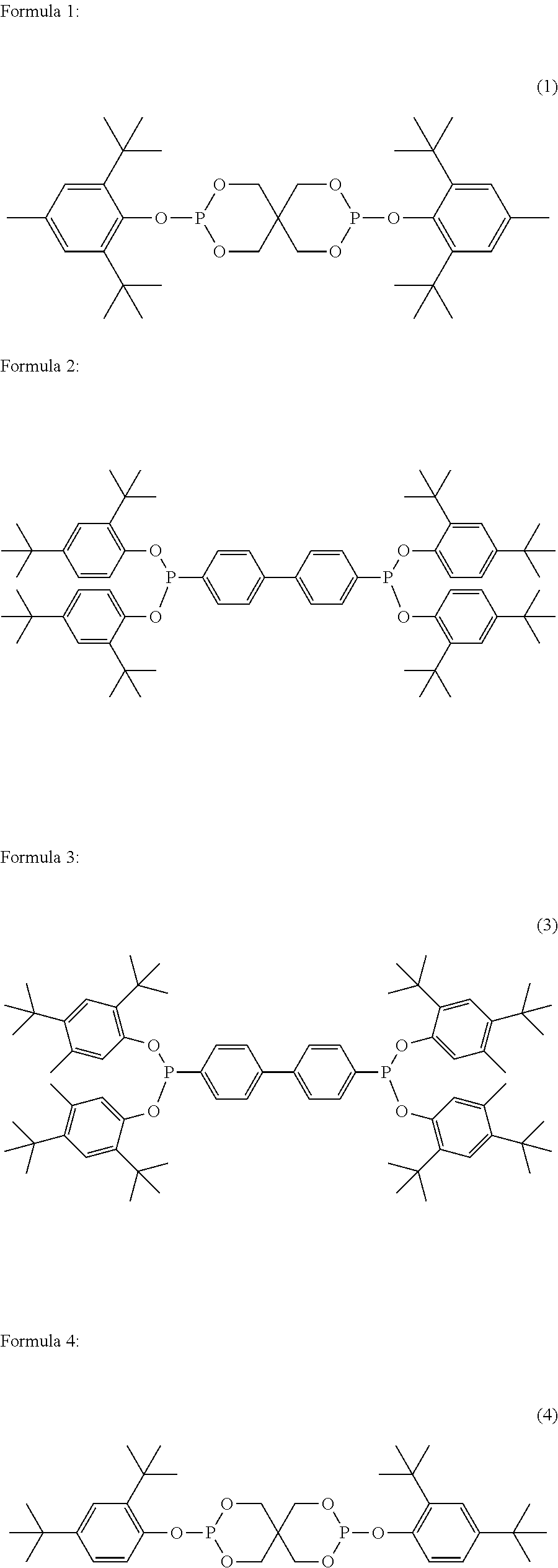Polyester polymerization catalyst and method for producing polyester using the same
a polymerization catalyst and polymerization technology, applied in the field of polymerization catalysts, can solve the problems of inhibiting the generation of foreign matter caused by catalysts, and achieve the effects of reducing polymerization time, high activity, and superior storage stability of catalysts
- Summary
- Abstract
- Description
- Claims
- Application Information
AI Technical Summary
Benefits of technology
Problems solved by technology
Method used
Image
Examples
example 1
[0074]To a 3-L, three-necked flask, which had been filled with nitrogen, were added 1000 mL of dehydrated ethylene glycol (produced by Wako Pure Chemical Industries, Ltd.) as a reaction solvent and 5.7 g (31.3 mmol) of mannitol (produced by Tokyo Chemical Industry Co., Ltd.), which were then stirred while being heated on an oil bath so that the internal temperature would become 80° C. Since the mannitol dissolved in about one hour, the oil bath was removed and cooling was conducted until the internal temperature became 40° C., which was a reaction temperature. When the internal temperature reached 40° C., 2.69 g (15.7 mmol) of titanium tetramethoxide (produced by Aldrich) was added as a titanium compound, followed by stirring at a reaction temperature of 40° C. over a reaction time of 24 hours. In this way, a colorless, transparent catalyst solution TM-1 (titanium content: 0.75 g / L) was obtained.
examples 2 to 6 , 14
Examples 2 to 6, 14
[0075]Catalyst solutions TM-2 to 4, 6, and 14 (titanium content: 0.75 g / L) were obtained in the same manner as in Example 1 except for changing the titanium compound, the molar ratio mannitol / Ti, the reaction temperature, the reaction time, and the reaction solvent as shown in Table 1. Only in TM-5, because a white precipitate was formed, water was removed by freeze drying and then the collected white solid was dispersed in ethylene glycol, affording a catalyst suspension TM-5 (titanium content: 0.75 g / L).
example 7
[0076]To a 3-L, three-necked flask, which had been filled with nitrogen, were added 1000 mL of dehydrated ethylene glycol as a reaction solvent and 5.7 g (31.3 mmol) of mannitol, which were then stirred while being heated on an oil bath so that the internal temperature would become 80° C. Since the mannitol dissolved in about one hour, the oil bath was removed and cooling was conducted until the internal temperature became 25° C., which was a reaction temperature. When the internal temperature reached 25° C., 4.45 g (15.7 mmol) of titanium tetraisopropoxide (produced by Wako Pure Chemical Industries, Ltd.) was added as a titanium compound and subsequently 1.57 mL (1.57 mmol) of 1-mol / L aqueous solution of sodium hydroxide (produced by Wako Pure Chemical Industries, Ltd.) was added as a base, followed by stirring at a reaction temperature of 25° C. over a reaction time of one hour. In this way, a colorless, transparent catalyst solution TM-7 (titanium content: 0.75 g / L) was obtained....
PUM
| Property | Measurement | Unit |
|---|---|---|
| temperature | aaaaa | aaaaa |
| temperature | aaaaa | aaaaa |
| reaction time | aaaaa | aaaaa |
Abstract
Description
Claims
Application Information
 Login to View More
Login to View More - R&D
- Intellectual Property
- Life Sciences
- Materials
- Tech Scout
- Unparalleled Data Quality
- Higher Quality Content
- 60% Fewer Hallucinations
Browse by: Latest US Patents, China's latest patents, Technical Efficacy Thesaurus, Application Domain, Technology Topic, Popular Technical Reports.
© 2025 PatSnap. All rights reserved.Legal|Privacy policy|Modern Slavery Act Transparency Statement|Sitemap|About US| Contact US: help@patsnap.com



